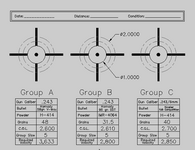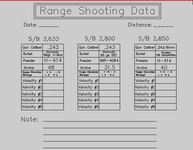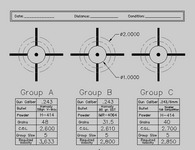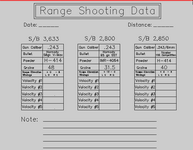That some damned fine shooting right there! Are those 5 or 3-shot groups?These groups were shot with necks turned down to .0082 and I typically shoot each case about 14 times before I start getting a click upon extraction. Cases are still useable but I start fresh with new brass after 14 reloads because the click comes with a heavier bolt lift and that upsets my aiming.View attachment 412667
Regardless, that's pretty damned good!















